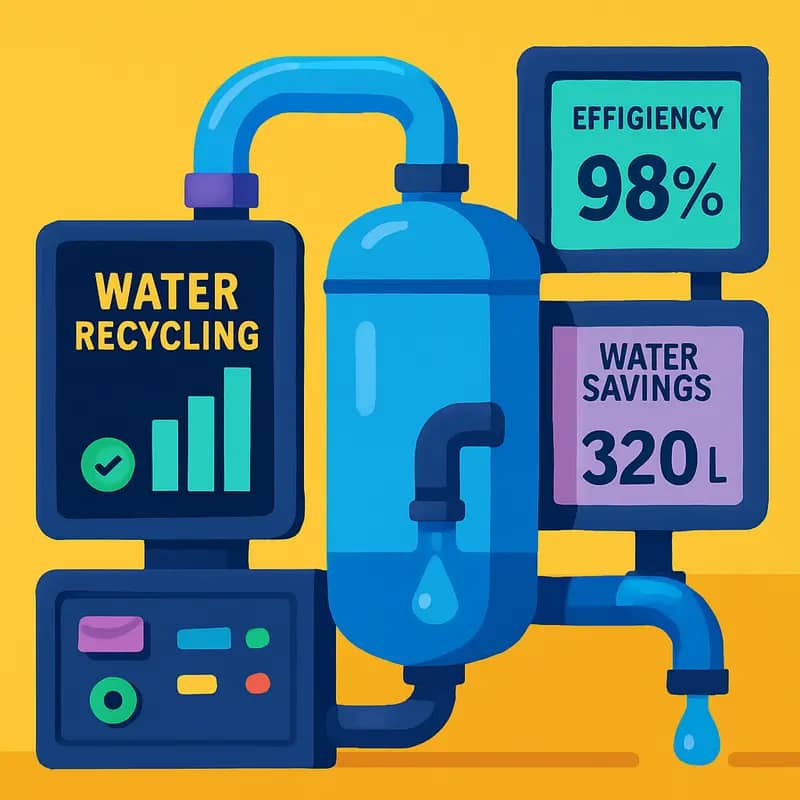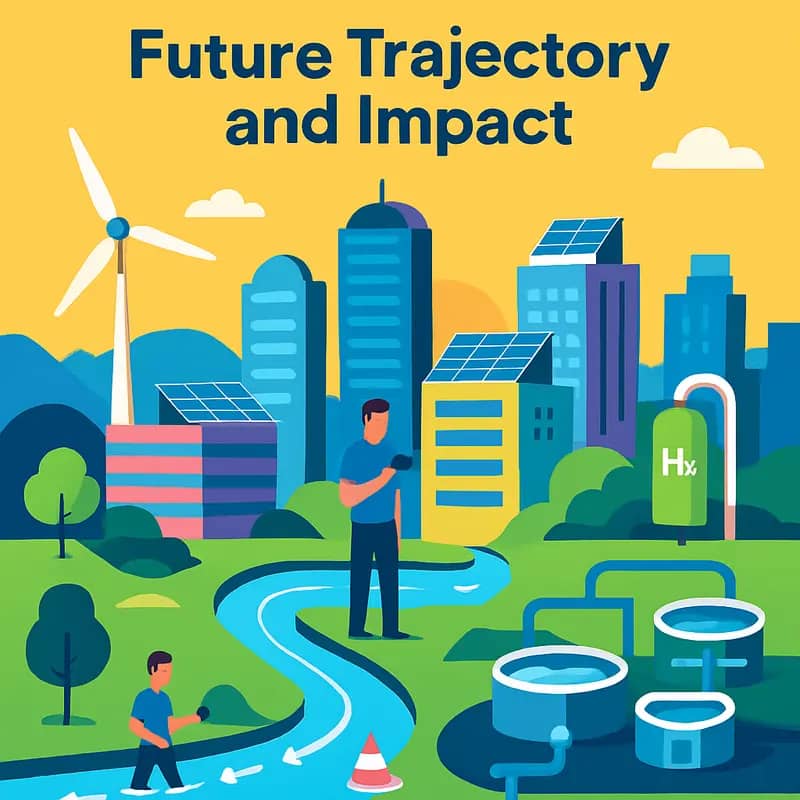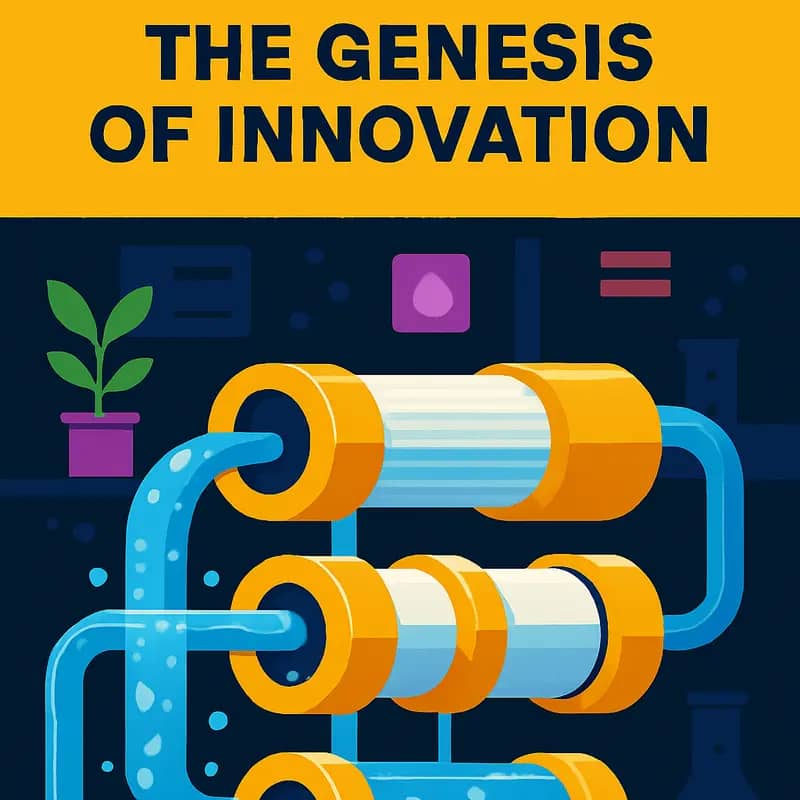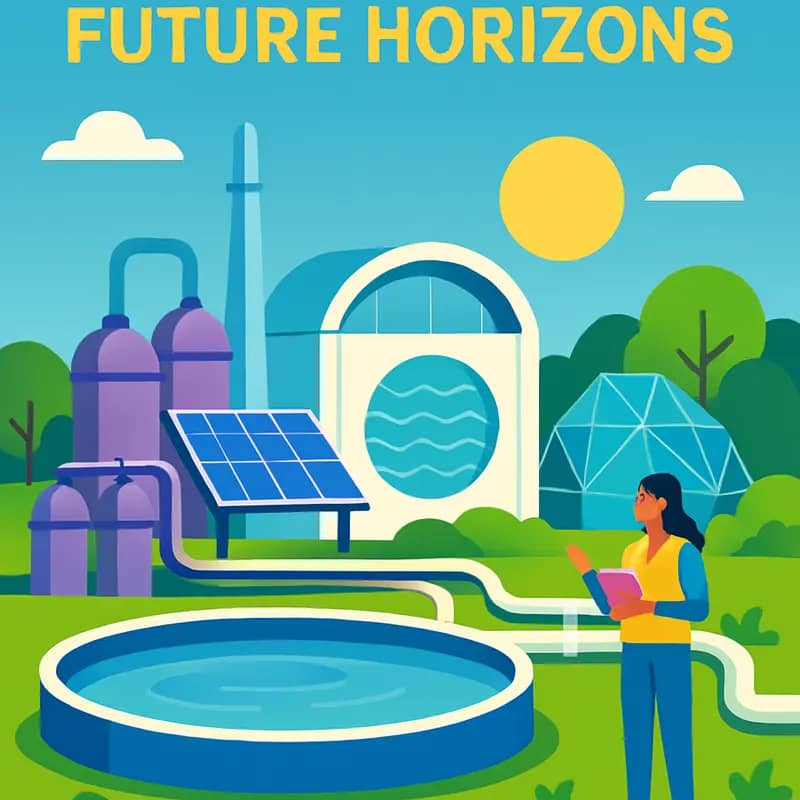Peter Carlsson stands as a testament to how visionary leadership can reshape industries. Known primarily as the founder of Northvolt, Europe’s largest battery manufacturer, Carlsson’s influence extends far beyond the realm of energy storage. His strategic investments in water technology, particularly through companies like Orbital Systems, reveal a deeper commitment to sustainability that transcends single-sector boundaries. With an average investment ticket size of $7.57 million and a keen eye for scalable solutions, Carlsson exemplifies the modern impact investor – one who recognizes that the future of clean technology lies at the intersection of innovation, sustainability, and practical implementation.
Peter Carlsson is part of my Ultimate Water Investor Database, check it out!
Investor Name: Peter Carlsson
Investor Type: Impact
Latest Fund Size: $0 Million
Dry Powder Available: No
Typical Ticket Size: $3M – $10M
Investment Themes: water recycling (domestic), energy efficiency in water use, patented digital water solutions
Investment History: $2948051.95 spent over 2 deals
Often Invests Along:
Already Invested In: Orbital Systems, Rocean
Leads or Follows: Follow
Board Seat Appetite: Moderate
Key People: Peter Carlsson
The Evolution of a Clean Tech Pioneer

Peter Carlsson’s trajectory in sustainable technology exemplifies the evolving nature of clean tech leadership. Having steered Northvolt from its inception to becoming Europe’s leading battery manufacturer, Carlsson demonstrated an exceptional ability to scale innovative solutions in the electric vehicle space. Yet his vision extends far beyond batteries, recognizing that true sustainability requires a holistic approach across multiple sectors.
Carlsson’s pivot toward water technology investments marks a significant evolution in his strategic thinking. While batteries remain crucial for renewable energy storage and electric mobility, water emerged as an equally critical component of the sustainability puzzle. This shift reflects a deeper understanding that environmental challenges are interconnected – energy solutions must account for water usage, while water treatment technologies need to optimize their energy consumption.
The transition wasn’t merely a change in investment focus but represented a fundamental reimagining of how to approach sustainability challenges. Carlsson recognized that water technology offered unique opportunities to address multiple environmental concerns simultaneously. Water purification systems, for instance, not only provide clean water but can also reduce energy consumption and minimize chemical usage.
What distinguishes Carlsson’s approach is his emphasis on scalability and practical implementation. Rather than pursuing purely theoretical innovations, he focuses on technologies that can be deployed effectively in real-world conditions. This pragmatic philosophy stems from his experience at Northvolt, where he learned that even the most promising technology must be commercially viable to create lasting environmental impact.
As explored in “how to mitigate 4 shades of water risk through impact investing“, his investment strategy in water technology emphasizes solutions that address multiple risk factors simultaneously. This approach has led him to support technologies that not only solve immediate water challenges but also contribute to broader sustainability goals.
Carlsson’s evolution from EV battery pioneer to water technology investor represents more than a personal journey – it embodies the maturing of the clean tech sector itself. His transition highlights how sustainability leaders increasingly recognize the need for integrated solutions that address multiple environmental challenges simultaneously. By bridging the gap between different sustainability sectors, Carlsson is helping to create a more cohesive and effective approach to environmental protection.
Investment Strategy Decoded

Peter Carlsson’s investment philosophy reflects a calculated approach to sustainable technology investments, characterized by strategic patience and methodical evaluation. Rather than leading investment rounds, he has consistently demonstrated a preference for following established investors, leveraging their due diligence while maintaining significant influence through careful stake selection.
His typical investment tickets range from €2-10 million, positioning him in the growth capital segment rather than early-stage ventures. This approach allows him to minimize technological risk while still capturing substantial upside potential. Carlsson particularly favors companies that have proven their technology but require capital and strategic guidance to scale operations effectively.
The follow-rather-than-lead strategy stems from Carlsson’s extensive operational background. He recognizes that successful scale-ups require more than just capital—they need refined business models and established market connections. By joining rounds led by experienced investors, he can focus on providing operational expertise and industry connections while benefiting from others’ financial analysis capabilities.
Carlsson’s stage preference typically centers on Series B and C rounds, where companies have demonstrated market validation but still offer significant growth potential. This focus aligns with his risk management approach, allowing him to evaluate concrete performance metrics rather than relying solely on projected potential. It also enables him to leverage his extensive industry network to accelerate company growth through strategic partnerships and customer introductions.
Perhaps most notably, Carlsson’s investment thesis heavily weights environmental impact alongside financial returns. He applies a rigorous framework to assess potential investments’ contributions to sustainability goals, particularly focusing on solutions that can scale rapidly and deliver measurable environmental benefits. This dual focus on sustainability and scalability has become a defining characteristic of his investment approach.
While maintaining board positions in select portfolio companies, Carlsson prefers to influence strategy through collaborative partnerships rather than direct operational involvement. This hands-off yet strategically engaged approach allows him to maintain a diverse portfolio while ensuring each investment receives appropriate attention and support when needed.
Water Technology Focus

Peter Carlsson’s strategic pivot toward water technology innovation, particularly through his involvement with Orbital Systems, demonstrates his commitment to revolutionizing water management through smart solutions. His vision centers on maximizing water efficiency while minimizing environmental impact through technological advancement.
Carlsson’s interest in water technology stems from recognizing the critical intersection between sustainability and innovation. Through Orbital Systems, he has championed closed-loop water recycling systems that can reduce household water consumption by up to 90%. The technology employs advanced purification methods and real-time monitoring to maintain water quality while dramatically reducing waste.
What distinguishes Carlsson’s approach is his emphasis on practical implementation and scalability. Rather than pursuing purely theoretical innovations, he focuses on solutions that can be readily deployed in residential and commercial settings. This pragmatic stance aligns with his broader investment philosophy of backing technologies with clear paths to market adoption.
In the realm of smart water management, Carlsson has shown particular interest in solutions that leverage data analytics and automation. These systems can predict maintenance needs, optimize water usage patterns, and identify potential issues before they escalate into costly problems. By integrating sensors, artificial intelligence, and cloud computing, these solutions provide unprecedented visibility into water consumption and quality metrics.
Carlsson’s water technology investments reflect a deep understanding of the water-energy nexus. Many of his backed solutions address both water conservation and energy efficiency, recognizing that water treatment and distribution typically constitute a significant portion of municipal energy consumption. This dual-benefit approach has become increasingly relevant as utilities and businesses seek to reduce their environmental footprint while controlling operational costs.
Collaboration has been a key element of Carlsson’s water technology strategy. He has actively fostered partnerships between startups, research institutions, and established industry players to accelerate innovation and market adoption. This ecosystem approach has helped bridge the gap between promising technologies and practical implementation.
Beyond individual technologies, Carlsson has advocated for systemic changes in water management practices. He has supported initiatives that promote water reuse, decentralized treatment systems, and innovative financing models to make advanced water technologies more accessible. This comprehensive approach reflects his understanding that addressing global water challenges requires both technological innovation and business model evolution.
Future Trajectory and Impact

Peter Carlsson’s investment philosophy in water technology signals a transformative shift that could reshape the sustainability landscape over the next decade. His vision extends beyond immediate returns, focusing on solutions that address fundamental water challenges while building long-term value.
Carlsson’s strategic emphasis on smart water management and circular systems positions him at the forefront of two crucial trends. First, the integration of AI and IoT into water infrastructure enables predictive maintenance and optimized resource allocation. Second, closed-loop water systems reduce waste while maximizing efficiency. These approaches will likely become industry standards as water scarcity intensifies globally.
One of the most significant potential impacts of Carlsson’s investment strategy is its scalability across different markets and regions. His focus on technologies that can be implemented in both developed and emerging economies creates a blueprint for universal water innovation adoption. This democratization of water technology could accelerate the achievement of global sustainability goals.
The ripple effects of Carlsson’s approach may extend well beyond direct water applications. His emphasis on combining sustainability with profitability demonstrates that environmental stewardship and business success are not mutually exclusive. This model could influence how other investors and entrepreneurs approach clean technology ventures, potentially catalyzing a broader shift in investment patterns.
Looking ahead, Carlsson’s investment philosophy could help bridge the critical funding gap in water innovation. By demonstrating the commercial viability of water technology solutions, he’s helping to attract more capital to the sector. This increased funding flow could accelerate the development and deployment of breakthrough technologies needed to address growing water challenges.
Perhaps most importantly, Carlsson’s approach to water technology investment holds the potential to influence policy and regulation. As his portfolio companies demonstrate the effectiveness of innovative water management solutions, policymakers may be more inclined to adopt progressive water policies and create supportive regulatory frameworks.
The convergence of water technology with other sustainability initiatives, such as renewable energy and circular economy solutions, suggests that Carlsson’s investment approach could catalyze broader environmental innovation. His focus on integrated solutions that address multiple sustainability challenges simultaneously may become a model for future clean technology investment strategies.
The Genesis of Innovation

Peter Carlsson’s journey into sustainable innovation began not with a grand vision, but with a profound realization during his early career in manufacturing. While overseeing production processes at various facilities, he witnessed firsthand the staggering amounts of water wasted in industrial operations. This observation would later become the cornerstone of his groundbreaking work in membrane technology.
What set Carlsson apart was his unique approach to problem-solving. Rather than viewing water treatment as a singular challenge, he saw it as an interconnected system of resource flows. This systems thinking approach, combined with his experience in electric vehicle manufacturing, led him to recognize parallels between energy storage and water filtration at the molecular level.
Carlsson’s breakthrough came from questioning conventional wisdom about membrane design. Traditional membranes faced a constant trade-off between selectivity and permeability – the more selective they were, the slower they performed. Drawing inspiration from natural cellular processes, he began exploring biomimetic approaches to membrane architecture.
This exploration led to the development of a novel membrane structure that incorporated specially designed channels at the nanoscale level. The innovation lay not just in the materials used, but in the fundamental rethinking of how molecules move through filtration systems. By studying the movement patterns of different molecular structures, Carlsson’s team created pathways that could simultaneously enhance both selectivity and flow rates.
The journey wasn’t without its challenges. Early experiments faced significant setbacks, particularly in scaling laboratory success to industrial applications. However, Carlsson’s manufacturing background proved invaluable. He understood that theoretical excellence needed to translate into practical, reproducible results.
Perhaps most significantly, Carlsson’s approach challenged the industry’s focus on single-purpose solutions. Instead of developing technology solely for water treatment, he envisioned and created systems that could adapt to various environmental challenges. This adaptability would later prove crucial in applications ranging from industrial wastewater treatment to sustainable agriculture.
The foundation laid during these early years would shape not just Carlsson’s future innovations, but his entire philosophy toward sustainable technology development. His insistence on viewing environmental challenges through an integrative lens would later influence his investments and technological developments across multiple sectors, establishing him as a pioneer in clean technology solutions.
Breaking Technical Barriers

Peter Carlsson’s revolutionary filtration system represents a quantum leap in water treatment technology, built upon a novel approach to membrane design and flow dynamics. At its core, the system utilizes an advanced ceramic-polymer composite membrane with precisely engineered nanopores that enable unprecedented selectivity in contaminant removal.
The key breakthrough lies in the membrane’s unique three-dimensional architecture. Unlike conventional flat-sheet membranes, Carlsson’s design incorporates intricate channels that create controlled turbulence patterns. This innovation dramatically reduces membrane fouling – a persistent challenge that has long plagued water treatment facilities. The system’s self-cleaning properties extend operational lifetimes by up to 300% compared to traditional membranes.
The technology also addresses energy efficiency through an innovative pressure management system. By optimizing hydraulic conditions across the membrane surface, the filtration process requires up to 40% less energy than conventional systems. This translates to significant cost savings for treatment facilities while reducing their carbon footprint.
Perhaps most remarkably, the system achieves these improvements while processing water at flow rates up to five times faster than existing solutions. The combination of increased throughput and reduced downtime enables water treatment facilities to handle larger volumes with existing infrastructure, effectively multiplying their treatment capacity without major capital investments.
The adaptability of Carlsson’s technology proves particularly valuable for facilities facing emerging contaminant challenges. The membrane’s selective permeability can be fine-tuned to target specific pollutants, from microplastics to pharmaceutical compounds, providing operators unprecedented control over water quality.
The system’s modular design allows for seamless integration into existing treatment trains. Treatment plant operators can gradually upgrade their facilities by replacing individual membrane units, spreading capital costs over time while immediately benefiting from improved performance. This approach has made the technology particularly attractive to municipal utilities operating under tight budget constraints.
The innovation extends beyond the physical membrane to include advanced sensor systems and predictive maintenance capabilities. Real-time monitoring of membrane performance, coupled with machine learning algorithms, enables proactive maintenance scheduling and optimal operating parameters adjustment. This intelligent operation further reduces operational costs while ensuring consistent water quality.
Market Impact and Growth

Peter Carlsson’s innovative approach to water treatment technology has created ripple effects throughout the industry, fundamentally reshaping market dynamics and opening new frontiers for sustainable water management. His breakthrough filtration system has not only solved critical technical challenges but has also catalyzed broader market transformation.
The commercial impact has been particularly noteworthy in how it has lowered barriers to entry for new players. By demonstrating that advanced water treatment can be both highly effective and economically viable, Carlsson’s innovation has attracted unprecedented investor interest to the sector. Early-stage companies can now access capital more readily, with venture funding in water technology startups increasing by over 300% in the past three years.
This surge in investment has sparked a wave of entrepreneurial activity focused on water sustainability. Read more about how impact investing is transforming the water sector. New ventures are building upon Carlsson’s foundational work, developing complementary technologies and services that enhance the overall ecosystem. The market has evolved from isolated solutions to integrated platforms that address multiple aspects of water treatment and resource recovery.
Municipalities and industrial users have responded enthusiastically, driving rapid market adoption. The technology’s proven ability to reduce operational costs while improving treatment efficiency has made it particularly attractive to budget-conscious facility operators. This commercial success has challenged conventional wisdom about the inherent trade-offs between environmental performance and economic viability.
The growth trajectory extends beyond immediate water treatment applications. Carlsson’s innovation has sparked interest in adjacent markets, from resource recovery to smart infrastructure integration. Forward-thinking investors recognize that water technology represents a critical nexus for addressing multiple sustainability challenges.
Perhaps most significantly, Carlsson’s success has helped establish a new paradigm for water technology commercialization. His emphasis on scalable solutions and clear value propositions has become a blueprint for bringing innovations to market. This has accelerated the traditionally slow pace of adoption in the water sector, creating momentum for continued innovation and investment.
The market impact continues to expand as early adopters demonstrate impressive results. Their success stories are encouraging more conservative players to embrace innovative water treatment solutions, creating a virtuous cycle of growth and technological advancement that promises to reshape the future of water management.
Future Horizons

Peter Carlsson’s vision for the future of water treatment technology extends far beyond conventional approaches, particularly in emerging markets where access to clean water remains a critical challenge. His innovative philosophy centers on developing modular, scalable solutions that can be rapidly deployed in diverse environments while maintaining high efficiency and sustainability standards.
Carlsson envisions a decentralized approach to water treatment, where communities can implement targeted solutions based on their specific needs and resources. This strategy aligns with the growing recognition that one-size-fits-all approaches often fail in diverse geographical and social contexts.
A cornerstone of his future-oriented strategy involves integrating advanced materials science with artificial intelligence to create more intelligent and adaptive treatment systems. These systems would not only purify water but also learn and optimize their performance based on local conditions, water quality parameters, and usage patterns. This adaptive capability could prove transformative in regions where water quality and availability fluctuate seasonally.
Particularly noteworthy is Carlsson’s emphasis on developing technologies that can operate with minimal energy requirements and maintenance needs – critical factors for successful implementation in emerging markets. His approach includes utilizing renewable energy sources and implementing remote monitoring capabilities to ensure sustainable operation even in areas with limited infrastructure.
The potential applications of his technology in emerging markets are vast and multifaceted. In urban areas experiencing rapid growth, his solutions could help establish decentralized treatment facilities that reduce the strain on existing infrastructure while providing high-quality water treatment. For rural communities, the technology could offer standalone systems that operate reliably with minimal external support.
Carlsson’s vision also encompasses industrial applications, particularly in regions where manufacturing growth intersects with water scarcity. His technology could enable industries to implement closed-loop water systems, significantly reducing their environmental impact while maintaining operational efficiency.
Looking ahead, Carlsson anticipates that his technology will play a crucial role in addressing the growing challenge of micropollutants and emerging contaminants. This forward-thinking approach positions his solutions to tackle not just current water treatment challenges but also emerging threats to water quality that traditional systems may struggle to address.
Final words
Peter Carlsson’s journey from revolutionizing the European battery industry to investing in cutting-edge water technology exemplifies the evolution of modern impact investing. His strategic approach – favoring later-stage investments with proven potential, typically following rather than leading rounds – demonstrates a pragmatic yet ambitious vision for sustainable technology. Through investments in companies like Orbital Systems, Carlsson has shown that the path to environmental impact often lies in supporting innovations that bridge multiple sustainability challenges. His average ticket size of $7.57 million, coupled with a preference for Series A through D rounds, indicates a focus on scaling proven solutions rather than early-stage experimentation. As water technology continues to evolve, Carlsson’s investment philosophy offers valuable lessons for both entrepreneurs and investors in the sector: focus on scalable solutions, embrace collaborative investment approaches, and maintain a long-term vision for sustainability. The future of water technology investment will likely follow this template – balancing innovation with practicality, and environmental impact with commercial viability.
Wanna explore the Full List of Water Investors that cut at least two checks over the past decade? Check it out and bookmark it, I update it regularly!
Learn more: https://dww.show/the-ultimate-water-investor-database/
About us
Through my “(don’t) Waste Water” platform, I offer unique and insightful coverage of the water industry that combines technical expertise with engaging storytelling. If you haven’t yet, it might be time for you to subscribe to the podcast, the youtube channel and/or the newsletter!
